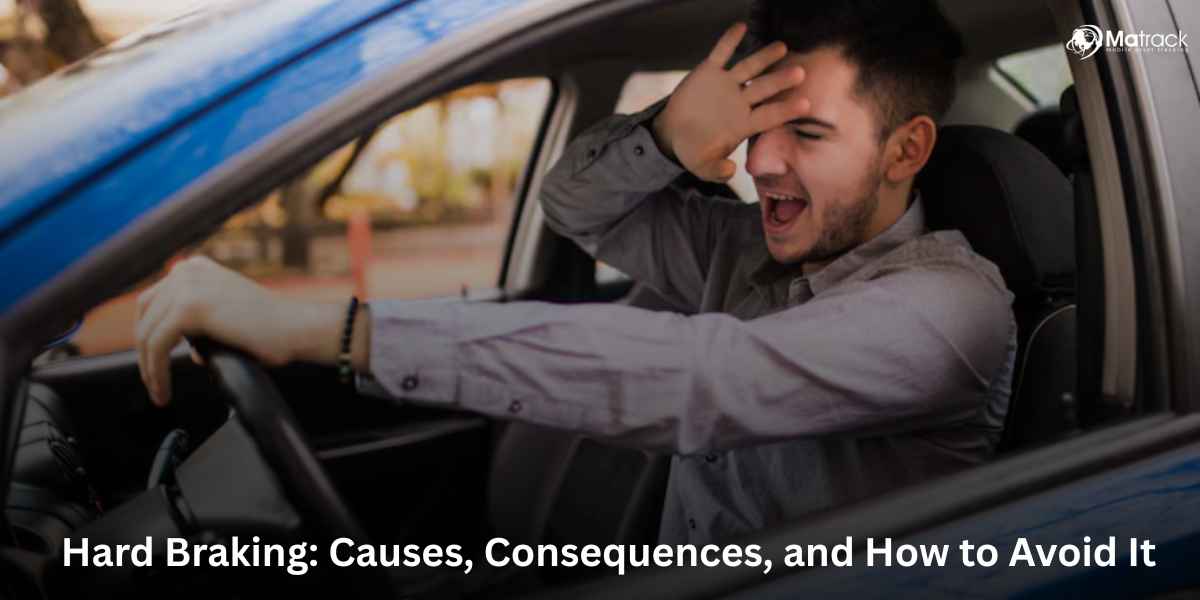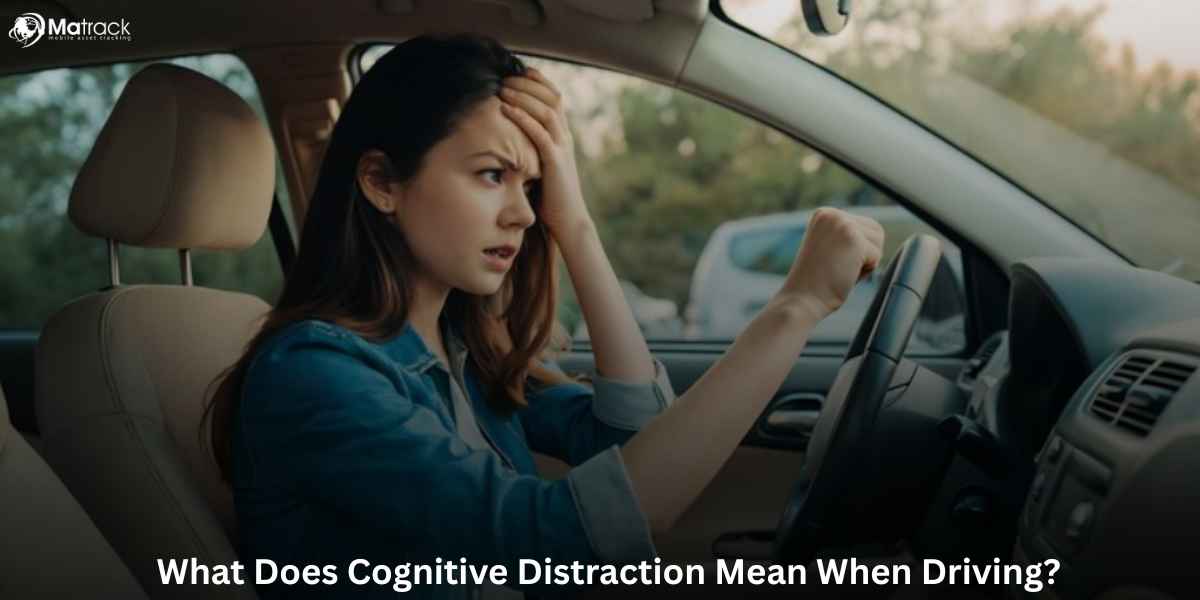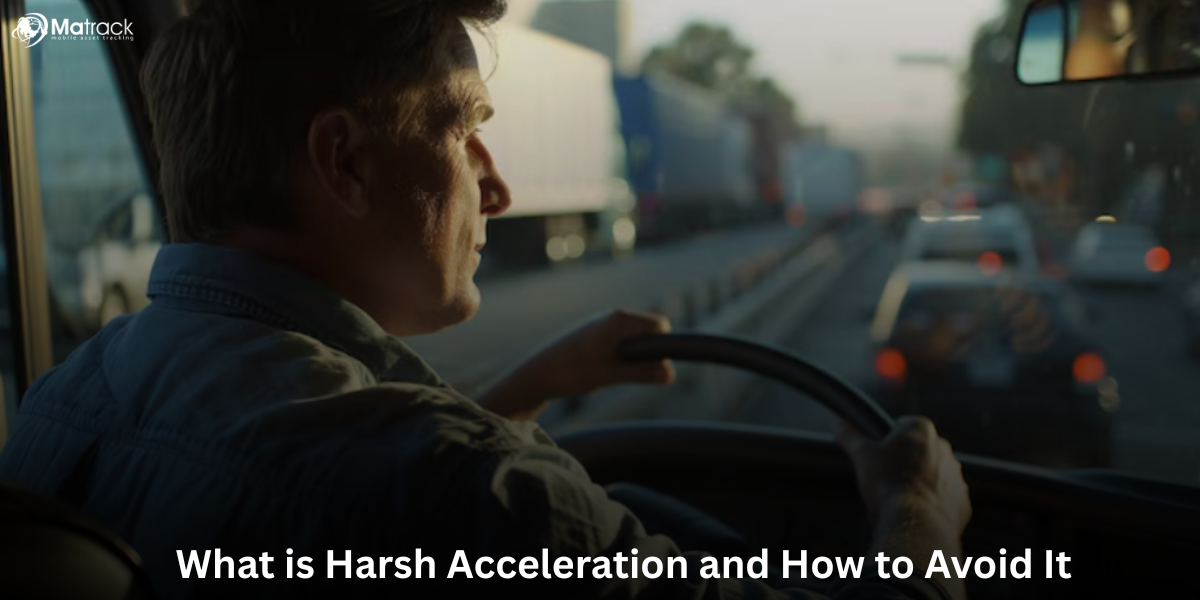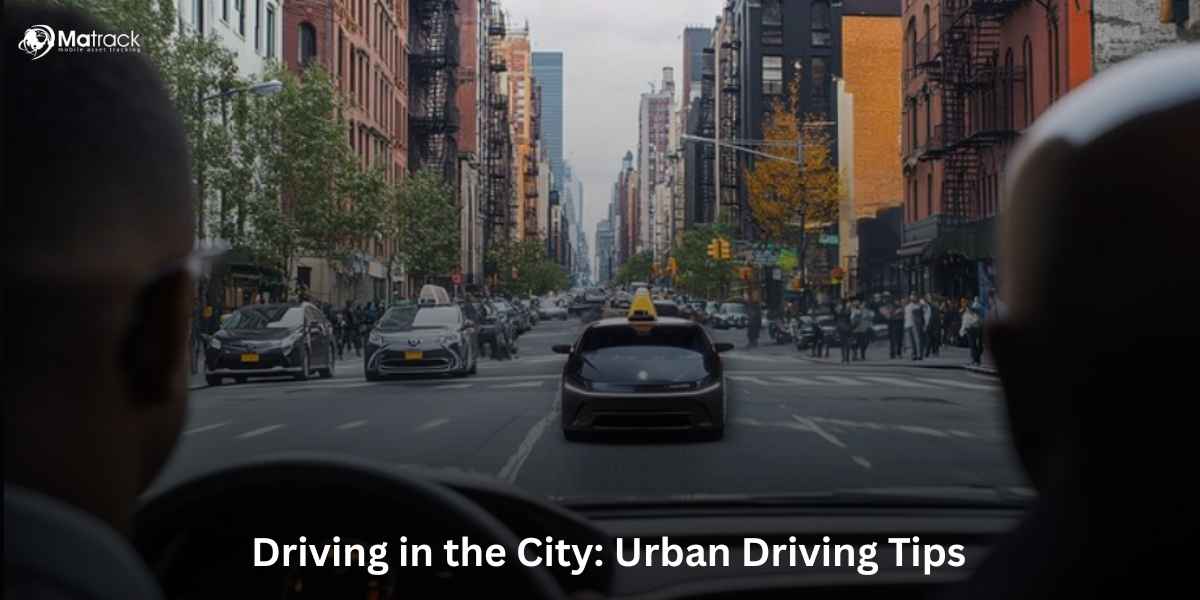Key Takeaways :
- Hard braking happens when drivers stop suddenly due to distractions, poor awareness, or road conditions.
- This behavior increases accident risk, damages vehicle parts, and lowers fuel efficiency.
- Fleet safety drops when hard braking disrupts driving consistency, load stability, and route timing.
- Matrack helps monitor hard braking using GPS tracking, ELD devices, and dash cams for better driver control.
What Is Hard Braking?
Hard braking means pressing the brake pedal very suddenly and strongly to slow the vehicle down quickly. It usually happens when a driver reacts too fast to something on the road and needs to stop right away.
A vehicle is considered to have hard brakes when it slows down faster than 6.5 miles per hour in just one second. Newer cars and fleet vehicles often have sensors that track this kind of braking to spot unsafe or aggressive driving.
How Is Hard Braking Detected?
Hard braking is closely tracked by telematics platforms, insurance providers, and fleet managers. Monitoring this behavior helps keep drivers safe and lowers the risk of accidents.
Telematics Devices
Telematics devices use GPS and sensors to detect sudden braking. They send this data to online systems that show alerts and reports in real time.
Usage-Based Insurance (UBI)
Usage-based insurance programs use this data to decide how much a driver pays. If hard braking happens a lot, it can lead to higher insurance costs under Pay-How-You-Drive plans.
Fleet Management Systems
Fleet management systems keep an eye on braking habits to reduce breakdowns and guide drivers. The data helps companies coach safer habits and avoid accidents.
Why Does Hard Braking Happen?
Tailgating
Tailgating gives drivers less time to react to sudden stops. When the vehicle in front slows down quickly, the driver behind often brakes hard to avoid crashing.
Distracted Driving
Distracted driving includes things like texting, eating, or changing music while driving. When drivers look back at the road too late, they slam the brakes to avoid hitting something.
Reckless Driving
Reckless driving means acting carelessly, like speeding or weaving through traffic. These actions often lead to quick braking when things don’t go as expected.
Poor Road Awareness
Poor road awareness means missing signs, turns, or lights ahead. Drivers who don’t know the road well tend to brake late and hard.
Weather Conditions
Weather conditions such as rain, ice, or fog create slippery and risky roads. Adverse driving conditions like these make drivers brake hard when they fail to slow down in time.
What are the Consequences of Hard Braking?
Increased Risk of Accidents
Increased risk of accidents comes from slamming the brakes when there’s not enough space behind. The car following might not have time to stop, leading to a rear-end crash.
Excessive Tire Wear
Excessive tire wear happens when brakes are used too forcefully. The tires wear down quicker, lose grip in the rain, and need to be replaced more often.
Brake System Deterioration
Brake system deterioration means the pads and discs get worn out from repeated hard stops. That makes the brakes weaker and adds to repair costs.
Reduced Fuel Efficiency
Reduced fuel efficiency happens when drivers brake too hard too often. This kind of driving makes the engine work less smoothly and burns more fuel than necessary.
Driver Fatigue
Driver fatigue kicks in when constant hard braking makes driving tense. It wears down focus and increases the chance of mistakes on the road.
Negative Impact on Driver Scorecards
Negative impact on driver scorecards shows up when braking habits are tracked. Too many hard stops can lower the CSA Score and lead to extra training or penalties.
How Does Hard Braking Impact Fleet Safety?
Hard braking affects more than just the driver behind the wheel. It creates imbalance across the fleet, making it harder to keep safety and performance consistent across all vehicles.
Aggressive stops by a few drivers can disrupt load stability, delivery schedules, and route planning for the entire team. These small inconsistencies add up and weaken overall coordination.
By tracking hard braking patterns, fleet managers can catch issues early and respond with training or support. This approach helps build a safer, more reliable driving culture across the fleet.
How to Avoid Hard Braking?
To avoid hard braking, drivers need to stay alert, read the road ahead, and adjust to changing conditions. These simple habits can make every trip smoother and safer.
Maintain Safe Following Distance
Maintain a safe following distance by leaving at least 3–5 seconds between your car and the one in front. Give even more space when roads are wet or speeds are high.
Anticipate Traffic Flow
Anticipate traffic flow by looking ahead, not just at the car in front. Spot brake lights, crossings, or turns early so you can slow down smoothly.
Drive at Consistent Speeds
Drive at consistent speeds to avoid sudden starts and stops. Using cruise control on open roads helps keep your pace steady.
Avoid Distractions
Avoid distractions by keeping your hands on the wheel and eyes on the road. Set up your music and navigation before moving and take calls hands-free.
Adapt to Weather
Adapt to weather by slowing down and giving more space when it’s rainy, foggy, or icy. Sudden moves on slippery roads can quickly lead to hard braking.
Use Engine Braking
Use engine braking by easing off the gas or downshifting in manual cars. This slows your car naturally and puts less stress on the brakes.
Enroll in Defensive Driving Programs
Enroll in defensive driving programs to learn how to spot trouble early and brake smoothly. These courses build better habits and make driving feel more in control.
How You Can Monitor Hard Braking With Matrack?
Matrack helps you keep an eye on hard braking through its fleet GPS tracking. You can quickly see where sudden stops happen and check how each driver is performing.
The ELD device records when hard braking takes place, along with speed and location. This makes it easier to figure out if the stop was because of traffic, weather, or how the driver reacted.
Fleet dash cam gives you a clear view of what really happened on the road. You can watch the footage to spot risky habits and guide drivers to improve.






